National Aviation Museum of Korea
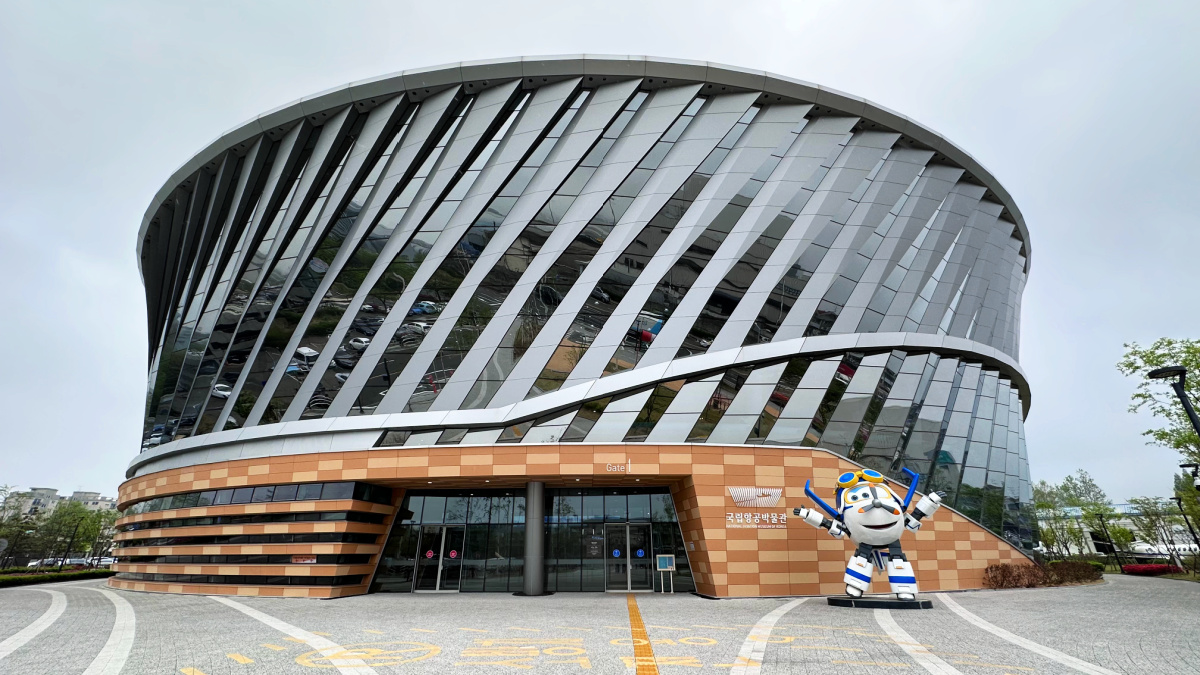 Facade of National Aviation Museum of Korea in Gimpo, Seoul.
Facade of National Aviation Museum of Korea in Gimpo, Seoul.Exciting National Aviation Museum of Korea
The National Aviation Museum of Korea is a newly-opened public museum on South Korea's aviation history and present status and the world's history and development of aviation.
Located in Gimpo, Seoul, it is dedicated to preserving and showcasing the country's substantial aviation history with the state of the art displays and interactive exhibits.
Visitors can explore a variety of aircraft models, such as fighter jets, transport planes, helicopters, drones, and more, through virtual reality modules.
In addition to these collections, the National Aviation Museum of Korea offers various educational programs and activities. For example, visitors can participate in workshops and lectures on aviation topics such as the history of Korean aviation, aircraft design, and pilot training.
Since the museum is close to Gimpo Airport, you can quickly get there using public transport, including the subway, bus, or taxi.
A nice view of South Korea's National Aviation Museum in Kimpo City, Seoul.
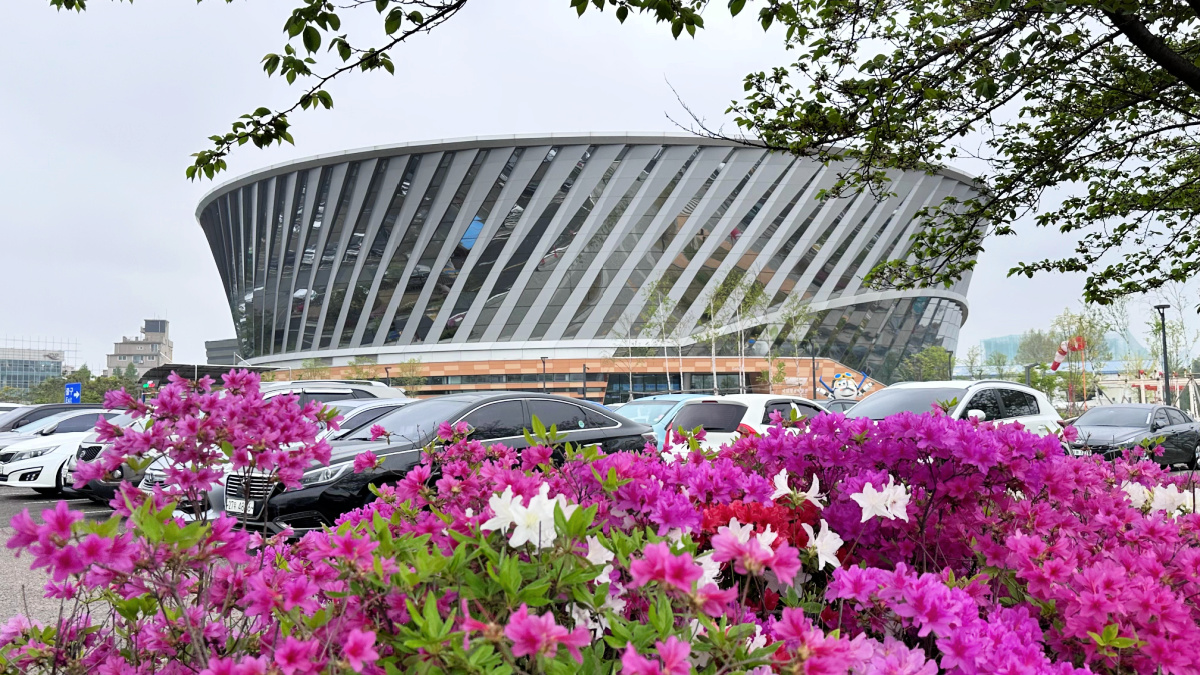 A nice view of South Korea's National Aviation Museum in Kimpo City, Seoul.
A nice view of South Korea's National Aviation Museum in Kimpo City, Seoul.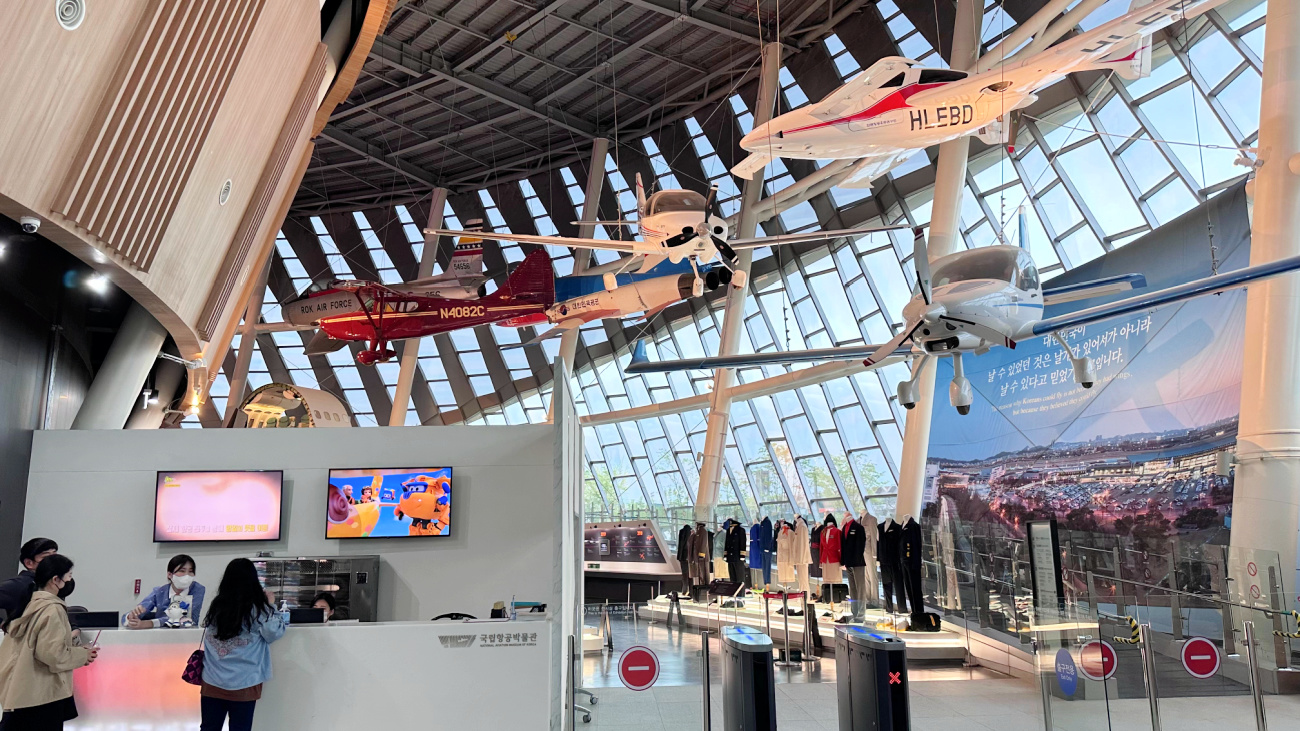 The Front Desk of the National Aviation Museum of Korea.
The Front Desk of the National Aviation Museum of Korea.1st Floor Exhibition
On this Floor, you can find the exhibition hall entrance area, History of World Aviation, aviation history of Korea, an auditorium, a cafe, a restaurant, a museum gift shop, washrooms, an elevator, and an information desk.
History of World Aviation
As you enter the main entrance door, you will immediately see the first exhibition hall where you can see descriptions of the world's aviation history.
In this area, you will find the human's dream to fly. So you will find people trying to invent wings and planes. One such significant contribution to this challenge was that of Leonardo Davinci.
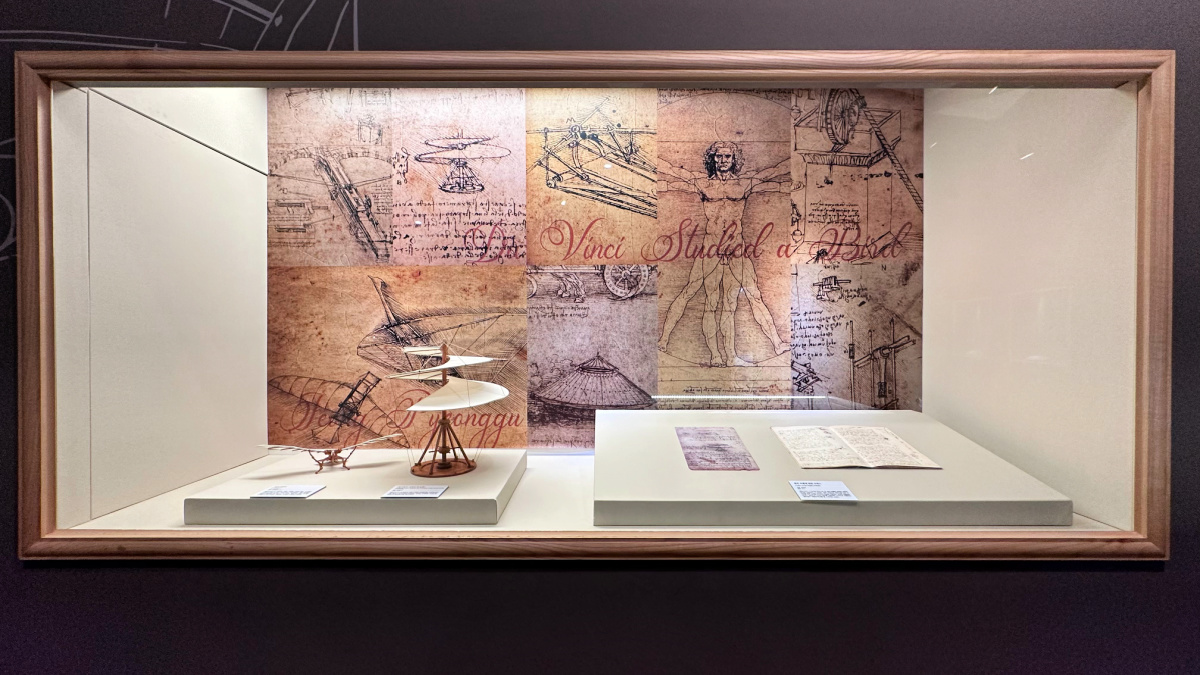 Leonardo da Vinci's sketches and a replica of his flying machine
Leonardo da Vinci's sketches and a replica of his flying machineA miniature of Da Vinci's model of the idea of a helicopter is on exhibition.
Leonardo da Vinci drew up plans for the first parachute and a hang glider. Finally, with his interests, it was possible to make human-powered flight a reality.
Leonardo da Vinci was an Italian Renaissance polymath widely considered one of the most influential figures in history. He significantly contributed to engineering, mathematics, anatomy, geology, astronomy, and other disciplines.
One of his most famous inventions was his design for the flying machine, which he sketched in 1488. The plan included wings made of linen and a system of pulleys, chains, and harnesses. This was the first time anyone had designed an aircraft capable of sustained flight.
Even though da Vinci's ideas were ahead of his time, they served as the foundation for the development of modern aviation.
Other inventions attributed to him include blueprint designs for a helicopter and a parachute. Da Vinci's ideas, drawings, and sketches were not just the basis of his inventions but also inspired future generations of inventors.
Engineers, historians, and aviation enthusiasts still study his designs today.
Hot Air Balloon of Montgolfier Brothers
The Montgolfier brothers were two French inventors who made and flew the world's first successful manned hot air balloon in 1783.
This was the first time people had ever ventured into the skies with a machine and opened the door to human-powered flight.
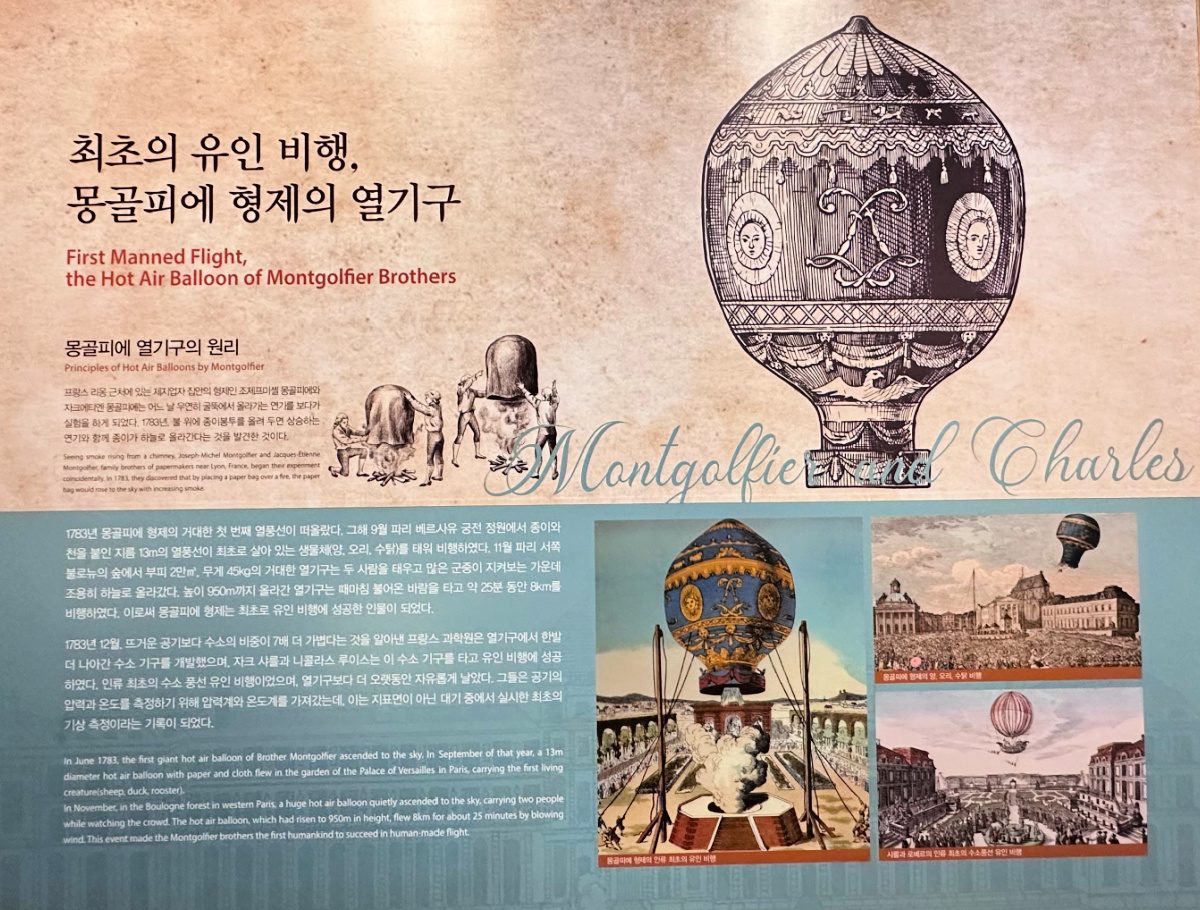 The first human-operated hot air balloon of the Montgolfier brothers
The first human-operated hot air balloon of the Montgolfier brothersThe Balloon of Montgolfier
The Montgolfier brothers' hot air balloon was a significant milestone in aviation history. The balloon consisted of a basket and flame-proof fabric envelope suspended from ropes and poles.
Hot air from burning straw and wool created lift, allowing the balloon to ascend into the sky. On December 1, 1783, the Montgolfier brothers conducted the first-ever human-crewed hot-air balloon flight.
The balloon flew for approximately 8 minutes and reached an altitude of about 6,000 feet. This marked the beginning of a new era in human-powered aviation and inspired many more inventors to develop innovative ways to fly.
Hot air balloons are still flown worldwide as a popular form of recreational aviation. The Montgolfier brothers' hot air balloon is remembered as an essential turning point in the history of aviation, and their achievements are still celebrated today.
Zeppelin's Airship
German Count Ferdinand von Zeppelin was the first to develop a giant airship. His airships, called Zeppelins, had rigid metal frames and lifting gas, making them capable of long-range travel.
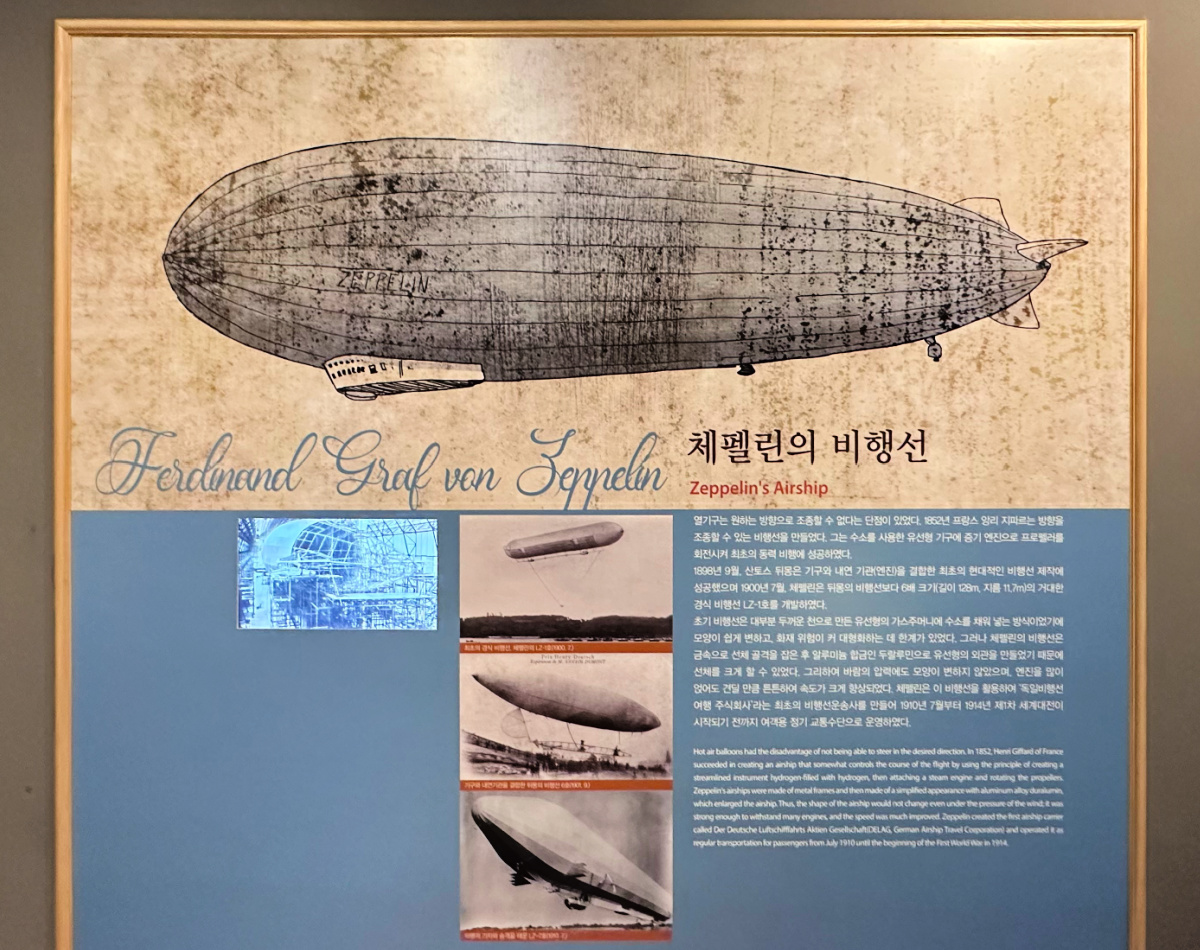 Ferdinand Graf von Zeppelin's airship
Ferdinand Graf von Zeppelin's airshipZeppelin's Airship
Ferdinand von Zeppelin's design for an airship revolutionized the aviation industry. His airships, known as Zeppelins, featured rigid metal frames and lifting gas to provide buoys and enable them to travel long distances.
The first flight of an airship took place in 1900 and lasted for 18 minutes. By 1909, Zeppelin's airship could achieve speeds up to 50 miles per hour and travel over 500 miles.
This made them the first aircraft capable of long-distance travel and revolutionized air transportation.
Zeppelin airships were used extensively during World War I for reconnaissance missions and bombing raids; however, their use declined after the war as technological advances made them obsolete.
Today, Zeppelins are used for sightseeing flights and remain popular among aviation enthusiasts. They are a reminder of the ingenuity and ambition of von Zeppelin and serve as an essential part of aviation history.
Wright Brothers' Aircraft
The Wright brothers, Orville and Wilbur Wright, are credited with making the first successful powered flight in 1903. The brothers' aircraft, the Wright Flyer, was powered by a 12-horsepower engine with two fixed wings.
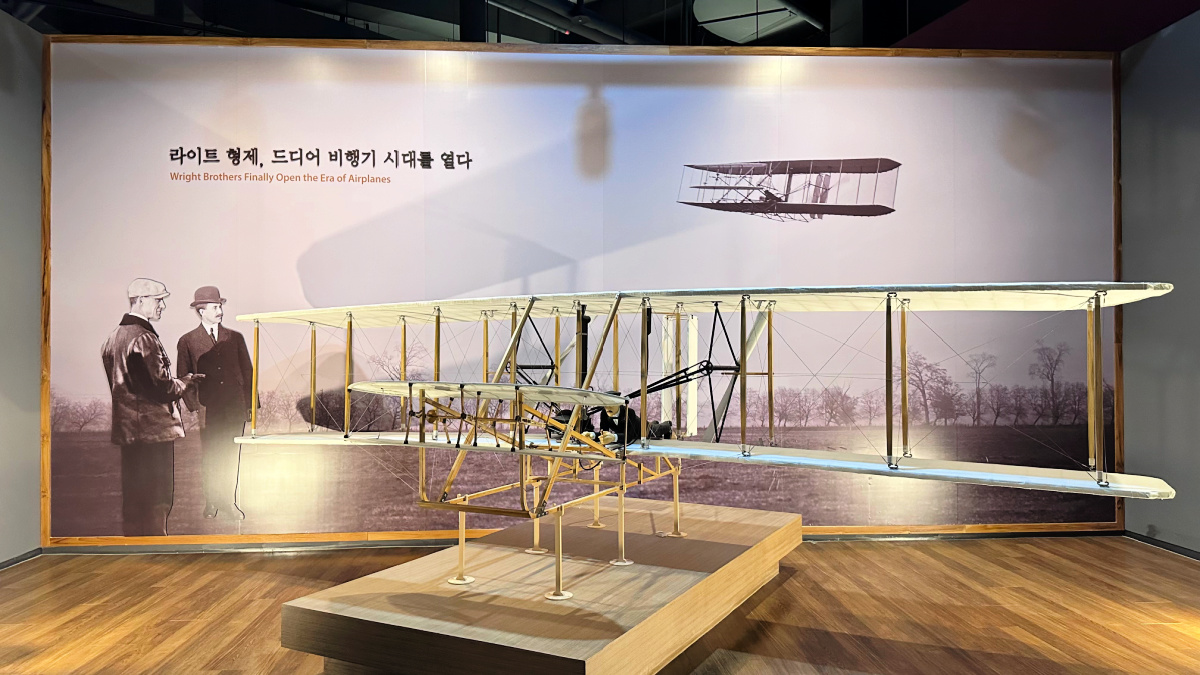 A replica of the Wright Brothers' aircraft (above) at the National Aviation Museum of Korea, Gimpo City, Seoul.
A replica of the Wright Brothers' aircraft (above) at the National Aviation Museum of Korea, Gimpo City, Seoul.Wright Brothers' Aircraft
The Wright brothers' invention of powered flight is widely considered one of the most significant achievements in aviation history. Their aircraft, the Wright Flyer, featured two fixed wings and was powered by a 12-horsepower engine.
On December 17, 1903, the Wright Flyer became the first aircraft to take off under its power and make a sustained flight with a human pilot.
The flight lasted 12 seconds and traveled 120 feet, marking a significant milestone in aviation history. The Wright brothers' aircraft that could take off from a level surface, remain in flight for an extended period, and be controlled by the pilot revolutionized air travel.
Today, their invention is remembered as one of the most important contributions to aviation history and can still be seen in modern aircraft designs.
George Caley's Glider
George Caley was an English aeronautical pioneer who contributed essentially to developing gliders and flying machines.
In 1799, he constructed a glider that incorporated wings with curved surfaces to create lift.
George Caley's glider is considered one of the most critical inventions in aviation history. He constructed his glider in 1799, featuring wings with curved surfaces to create lift.
At the time, this design was revolutionary as previous attempts at flight relied on flat wings that could not generate enough lift to take off. The first successful test flight took place in 1800 and reached an altitude of about 10 feet.
Although the glider had limited success, it served as a proof of concept and demonstrated the potential of powered flight. Caley's invention is essential to aviation history, and his achievements are still remembered today.
Otto Lilienthal's Glider
Otto Lilienthal was a German aviation pioneer who made important contributions to the development of gliders.
In 1891, he constructed a series of hang gliders with curved wings and an adjustable tail section that allowed him to stay in flight for increasingly more extended periods.
Otto Lilienthal's Glider
Otto Lilienthal's glider was a significant breakthrough in aviation history.
He constructed it in 1891, featuring curved wings and an adjustable tail section that allowed him to stay in flight for increasingly more extended periods.
His first successful flight occurred on August 9, 1891, when he flew 150 feet through the air.
His experiments with gliders proved the potential of powered flight and served as the basis for many designs used in later aircraft. Lilienthal's achievements are essential to aviation history and his inventions are still remembered today.
The Wright brothers, George Caley and Otto Lilienthal contributed significantly to aviation development. Their inventions and experiments ushered in a new era of air travel, transforming our world forever.
The Wright Flyer, Caley's glider, and Lilienthal's glider are all reminders of their pioneering efforts and are essential milestones in aviation history.
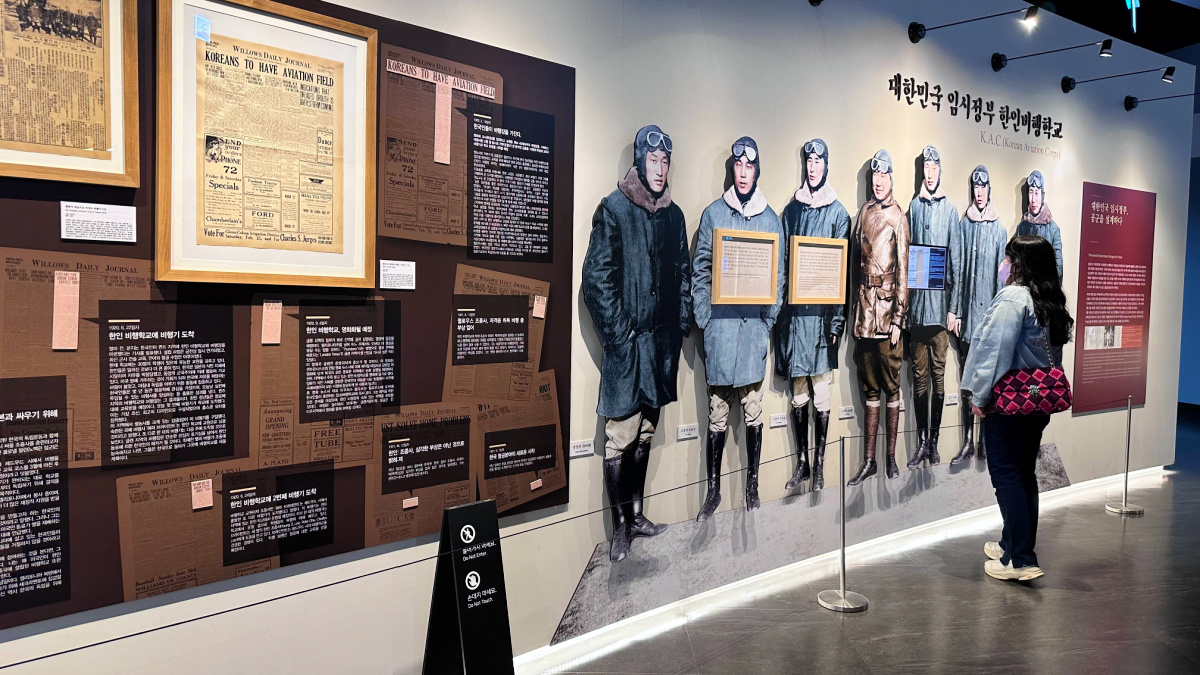 History of Korean Aviation
History of Korean AviationAviation History of the Republic of Korea
The Republic of Korea has a long and proud history in aviation. In the early 1920s, Korean inventor Chang Myon Hwan constructed powered aircraft that could make short flights.
Later, during World War II, Korea sent pilots to fight for the Allied forces against Japan. After the war, Korea's aviation industry continued to grow with numerous airlines and airports being established.
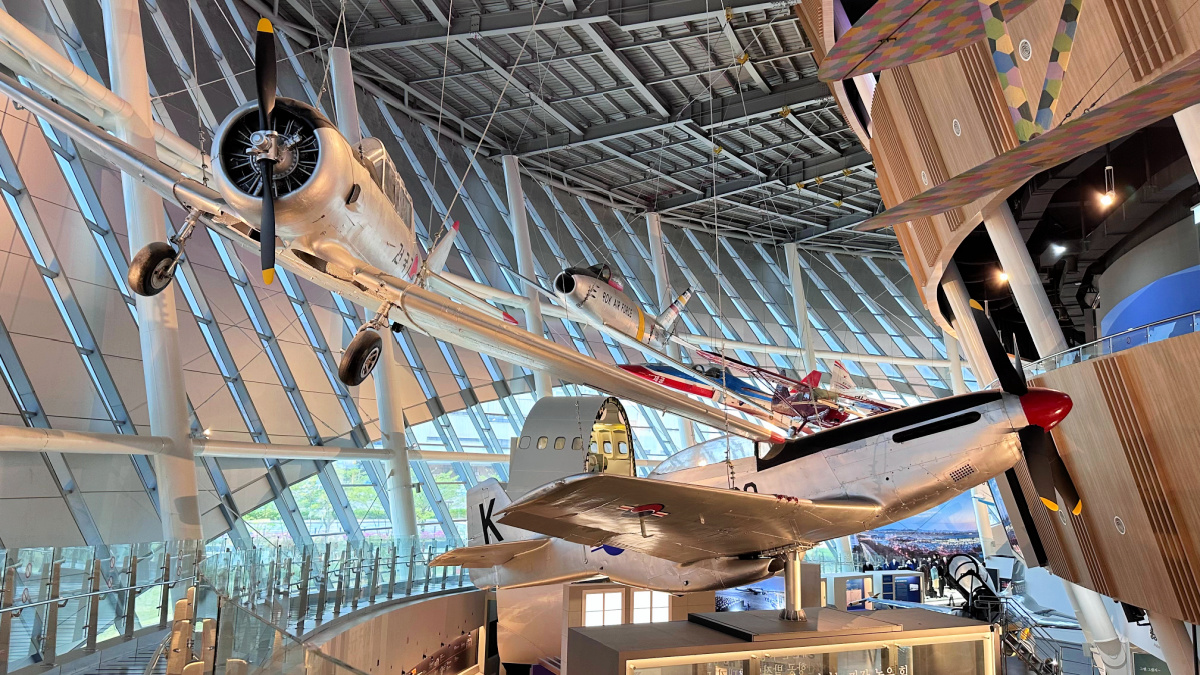 Airplanes used in South Korea during and after the war.
Airplanes used in South Korea during and after the war.The Republic of Korea also has an extensive history in aerospace engineering.
In the 1950s, the Korean government launched a program to develop its aircraft industry to produce domestically-built aircraft by the late 1960s.
This program was successful, and today, Korea is home to world-renowned aerospace companies like Korea Aerospace Industries, which makes commercial and military aircraft.
The Republic of Korea's aviation history is integral to its modern identity. It represents the country's commitment to innovation and progress, making it a leader in aerospace engineering and air travel.
The Republic of Korea will continue to build on its rich aviation heritage in the future.
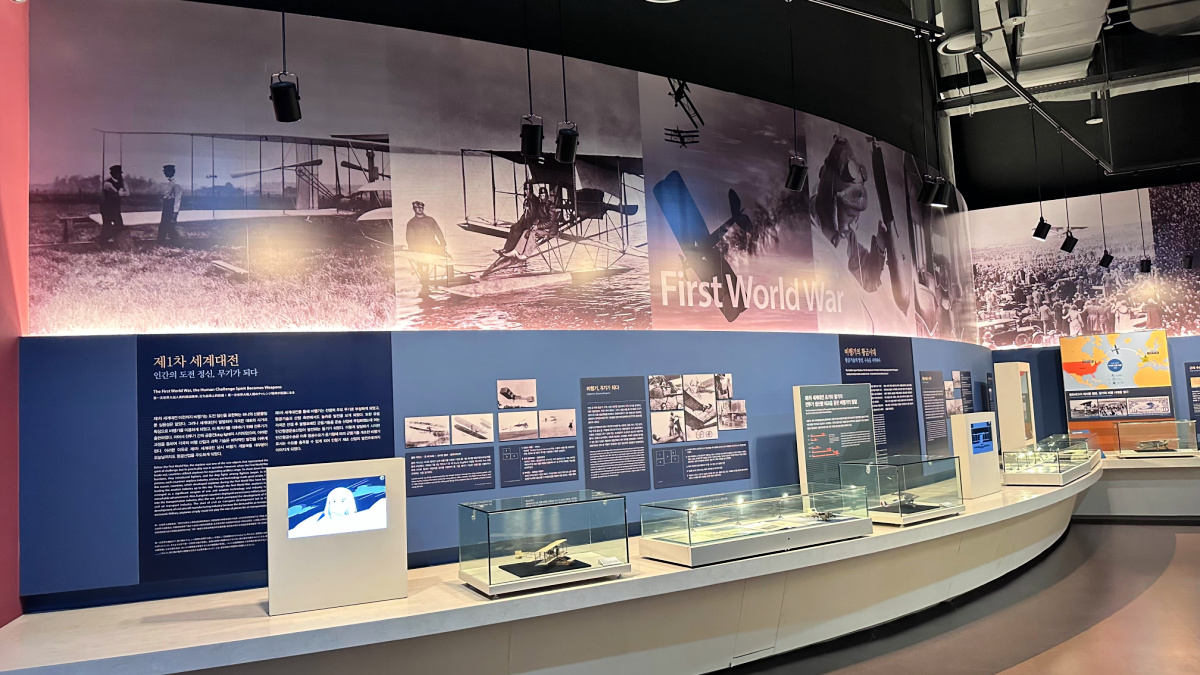 Photos of airplanes during the First World War
Photos of airplanes during the First World War2nd Floor Exhibition
On this Floor, you can find exciting facilities, such as in-flight training experience, VR experience, and air traffic control experience.
In-flight training experience lets visitors feel how a real pilot feels during a flight.
VR experience uses 3D technology and special goggles to give visitors a unique view of the cockpit.
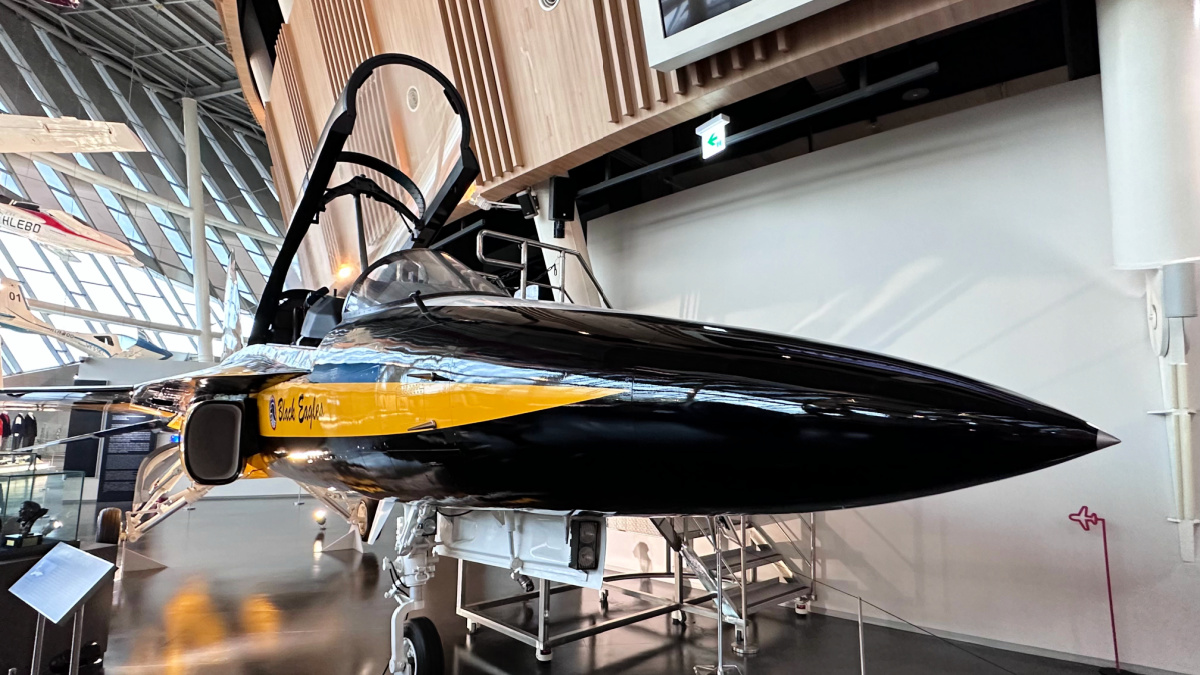 Black Eagle fighter jet of South Korea
Black Eagle fighter jet of South KoreaFinally, the air traffic control experience allows visitors to understand how air traffic is managed in the sky.
For these exciting activities, you must register with a fee (about 5,000 KRW/person) to avail of the experience.
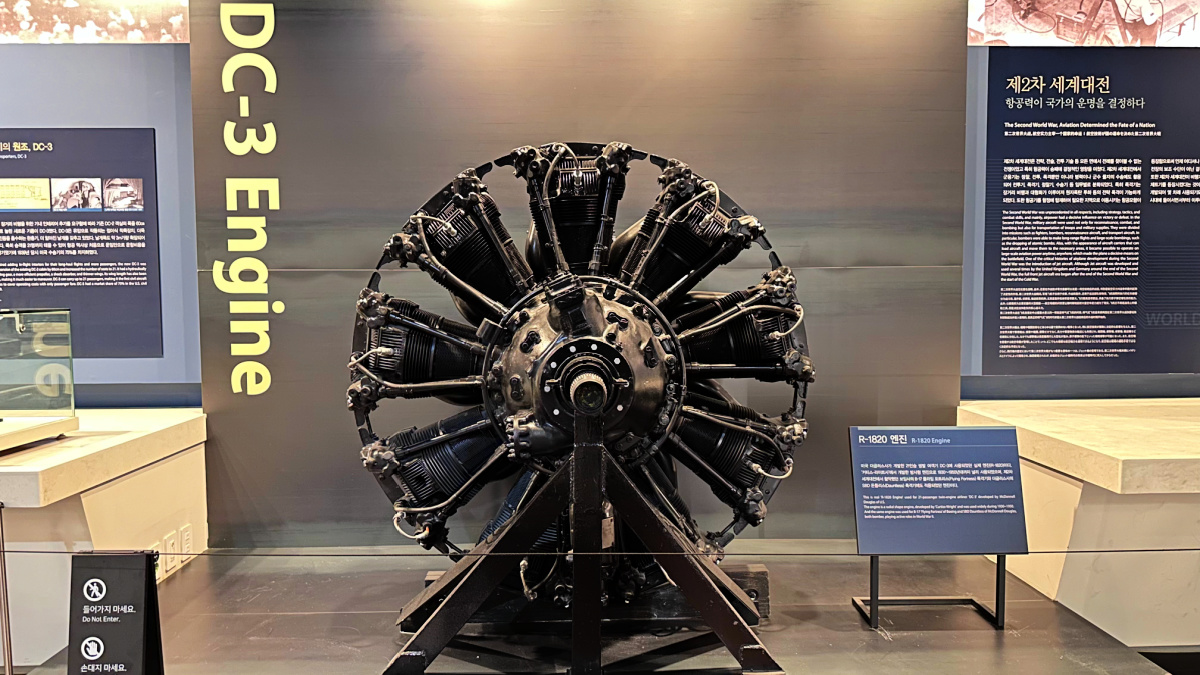 DC-3 engine is the first engine used in commercial flights.
DC-3 engine is the first engine used in commercial flights.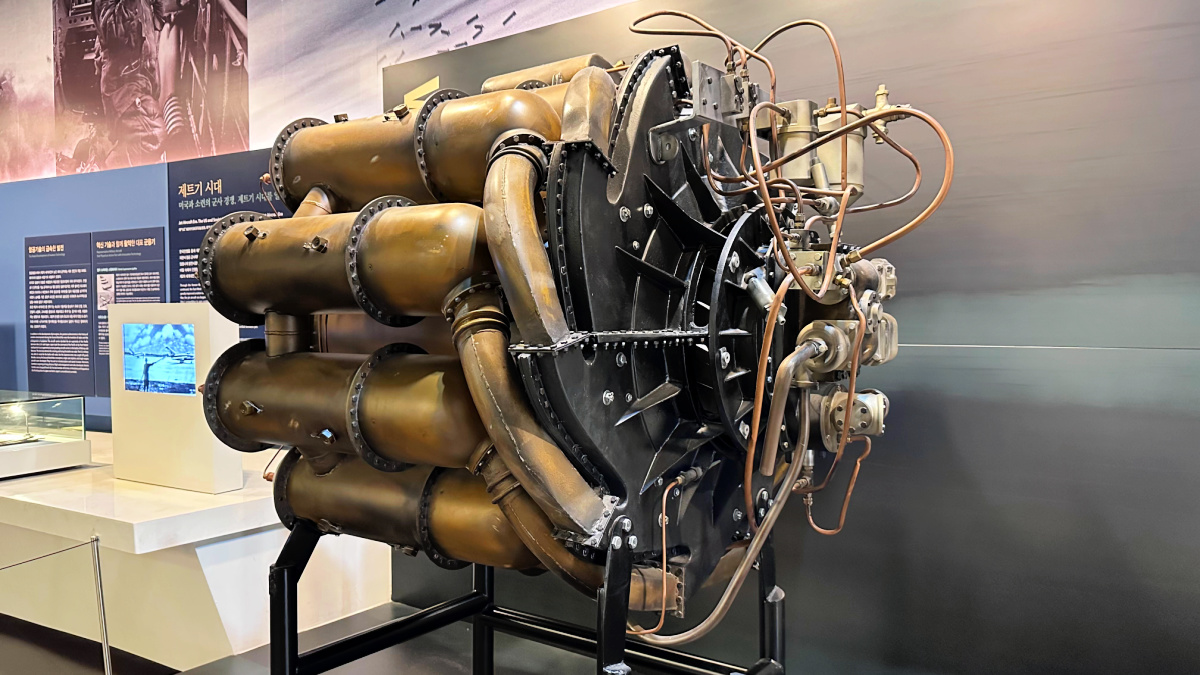 A jet engine
A jet engineAir Transport Industry and Airport section
On this Floor, you can find exciting displays about the air transport industry and airport.
The first section introduces the air transport industry in Korea with its history and development, current trend, and future outlook.
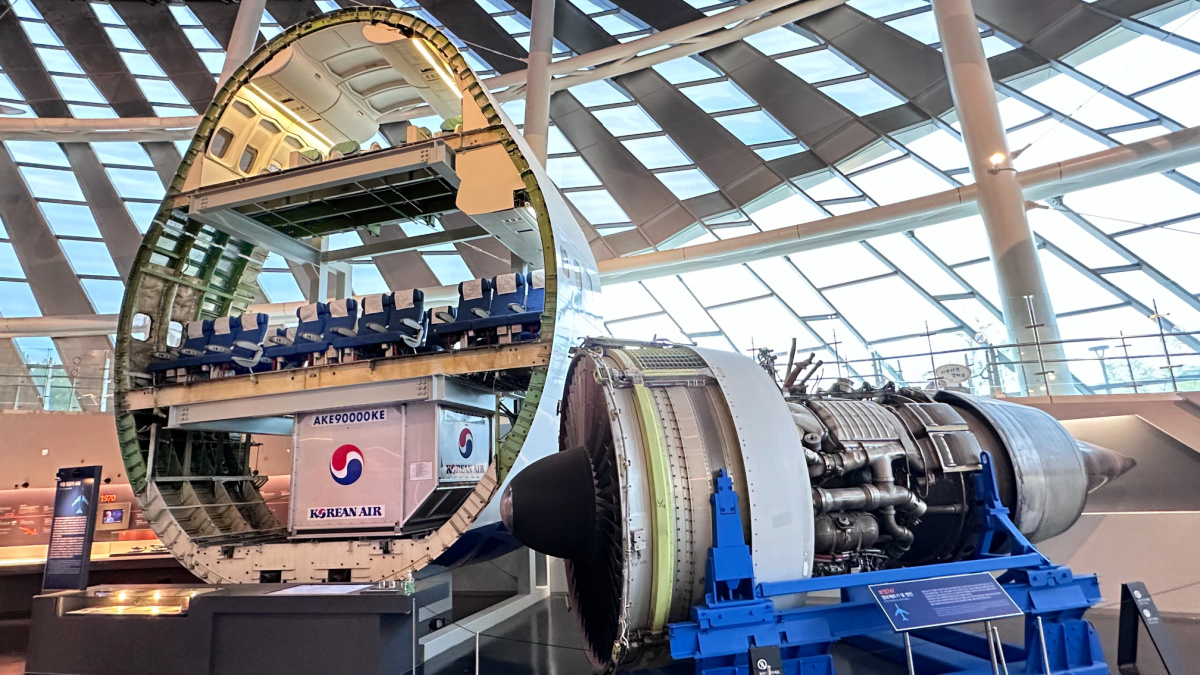 Korean Air's piece of the airplane and a machine
Korean Air's piece of the airplane and a machineAircraft Development and Science
The technology section is also here. Visitors can learn about the structure and design of current commercial aircraft and how technology is developed for them.
The airport information section explains airports' various roles in the air transport system, ranging from infrastructure to services provided to passengers.
3rd Floor Exhibition
On this Floor, you can experience the Aviation Leisure-Sports Experience activity (for 5,000 KRW). This is a realistic program for learning fundamental aviation knowledge and safety measures. You will be using the virtual reality (VR) device and simulator.
For children, this Floor offers an Airport Experience for Children facility giving children an education program called 'superwings.' the fee is 2,000 KRW.
On this Floor, you will find a convenience store, picnic zone, unique exhibition hall, aviation library, and rooftop garden, among others.
Gimpo International Airport and People
This area commemorates the opening of the National Aviation Museum of Korea and the 40th anniversary of Korea Airports Corporation.
Aviation Technology Development and Future Life
This section introduces advanced technology related to the aviation industry and its application in future life.
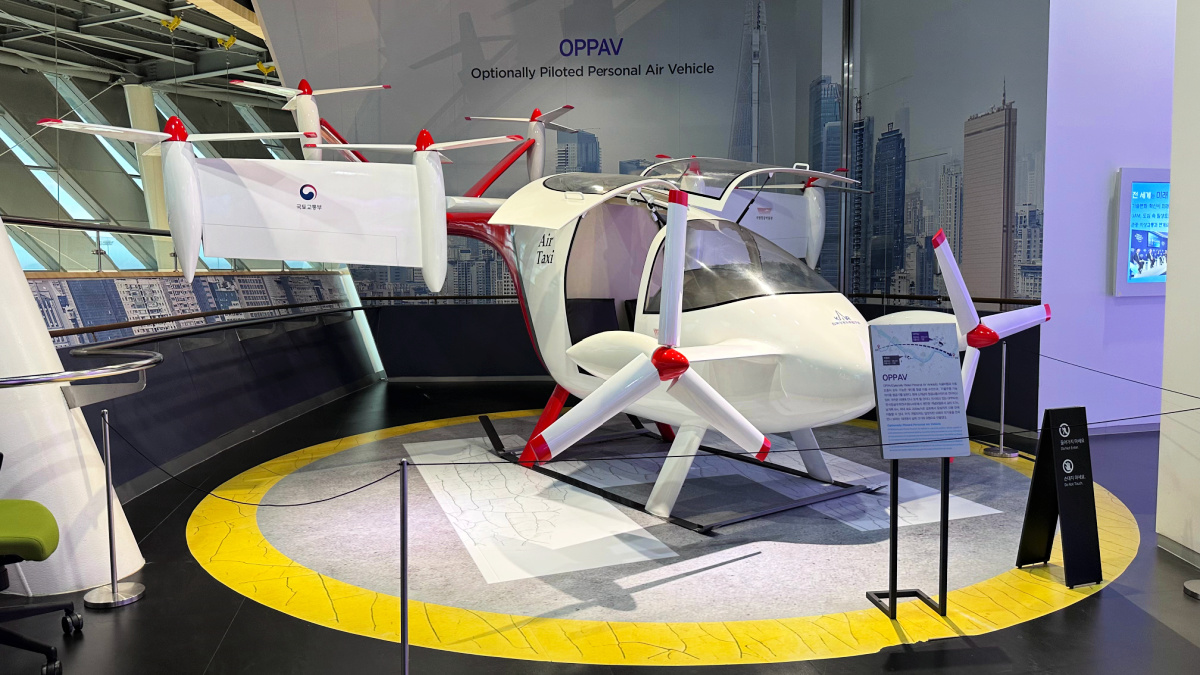 Personal Air Vehicle
Personal Air Vehicle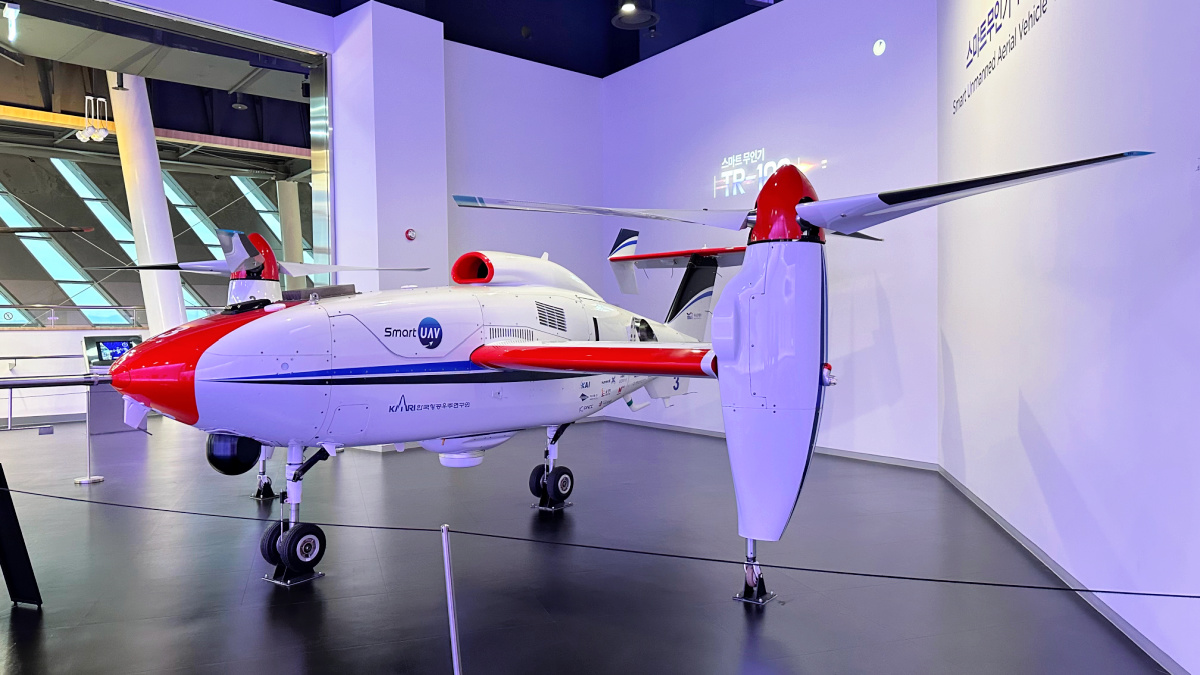 Unmanned aerial vehicle
Unmanned aerial vehicleHere, you can find displays on the development of aircraft materials, new engine technology, and robot technology. The displays also explain how these technologies will be applied in day-to-day life.
More Information
Check out below helpful information regarding the museum's availability days for a visit, contact details, address, and website.
Open: Tuesday - Sunday; 10-18:00
Closed: January 1, Chuseok (Thanksgiving Day in Korea)
Phone: 02-6940-3198~9
Payment Inquiry: 02-6933-6480
Exhibition Hall: Free
Experience Facilities: Paid (please check the website below)
www.aviation.or.kr
Address: 177, Haneul-gil, Gangseo-gu, Seoul, Republic of Korea
National Aviation Museum of Korea
Thanks for reading! We hope this has helped you better understand the National Aviation Museum of Korea. Make sure to visit the museum if you are ever in Seoul!
- Home
- Museums & Galleries
- Aviation Museum
Get Exciting Activities
Book one of our exciting activities today to experience the thrill of a lifetime! Take advantage of this opportunity and secure your spot in advance.
Hotel Map Guide
Find your affordable, accessible, and comfortable hotel in Seoul at Agoda.Com. See the hotel map below...
Hotel Booking Guide
Find affordable and amazing hotels on Agoda.com using the search box below. Book now to enjoy great discounts and save!
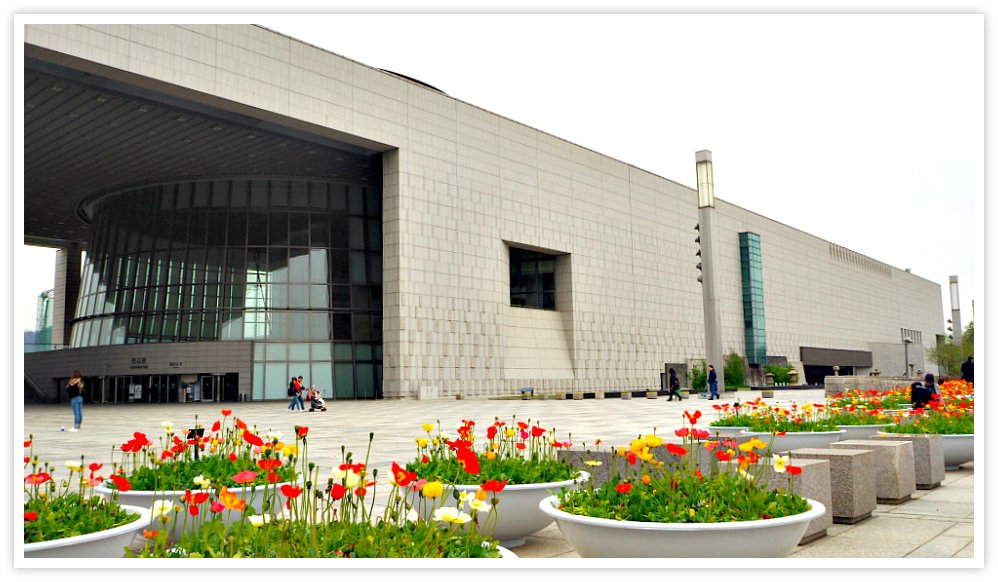
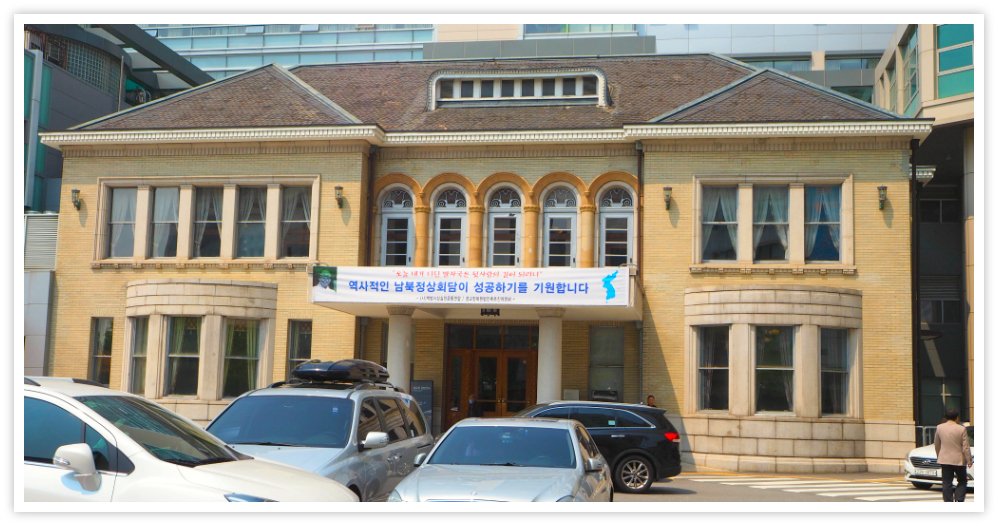
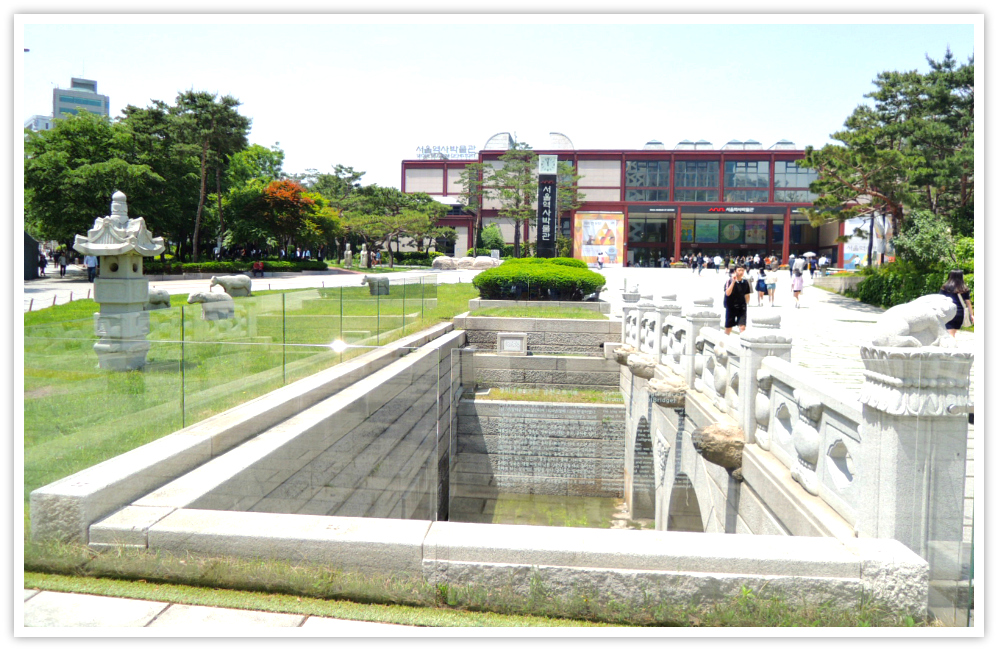




New! Comments
What do you think about this page? Leave me a comment in the box below.